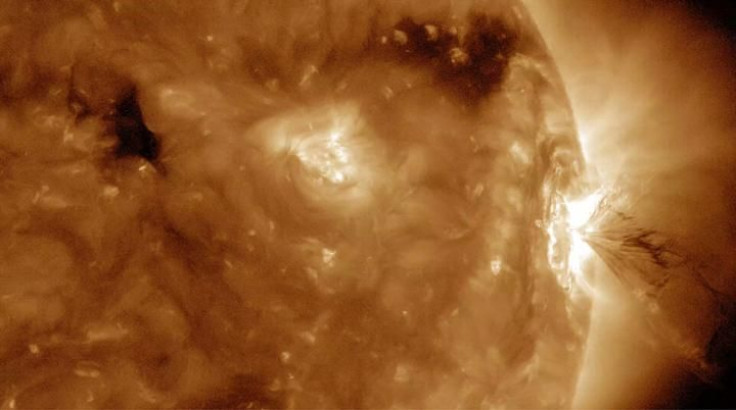Storms On The Sun: How The Sun Changes Earth’s Electricity

A storm on the Sun is powerful enough to suck the electricity right out of Earth.
Astronomers already knew that a solar storm could mess with our planet’s magnetic fields, but that it depletes spots in our upper atmosphere of their electrically charged particles is a new finding. A team of researchers reported the discovery in the journal Radio Science, based on data they collected after the Sun powerfully ejected material in the direction of Earth. The Sun’s expelled material, released in two surges known as coronal mass ejections, caused changes in the atmosphere above high northern latitudes.
Read: This Large Asteroid Is Coming for Earth
“The finding adds to our knowledge of how solar storms affect Earth and could possibly lead to improved radio communication and navigation systems for the Arctic,” according to NASA’s Jet Propulsion Laboratory. That’s because when the electrically charged material from a solar storm reaches Earth and affects our magnetic fields, in what’s called a geomagnetic storm, it can mess with communication systems that relay signals through the atmosphere. “Both electron depletion and electron increases in this layer can possibly cause radio communications to fail, reduce the accuracy of GPS systems, damage satellites and harm electrical grids.”
In the case of these two coronal mass ejections, when the solar material reached Earth, it originally behaved in exactly the way scientists expected: It added electrons to the upper atmosphere over Greenland. But upon closer inspection, the storm also drained electrons from the atmosphere in places just to the south, covering between 300 and 600 miles — a change that lasted for days.
Now astronomers are trying to find out what causes the loss of electrons.
Storms in Earth’s magnetic fields can not only be heard in radio communications; but they can also be seen. The colorful display known as an aurora that sometimes appears at northern latitudes is a byproduct of a solar storm. When the Sun blows its charged particles in this direction and they interact with gases in Earth’s atmosphere, they can light up the night sky. And the swirling shapes of an aurora tell observers something about how magnetic fields are drawn across the planet, because auroras move in a certain way when they encounter those fields.
It’s not just Earth where this happens either. Astronomers have observed auroras in other places in the solar system, including Uranus, Jupiter and Saturn.
See also:
© Copyright IBTimes 2024. All rights reserved.











